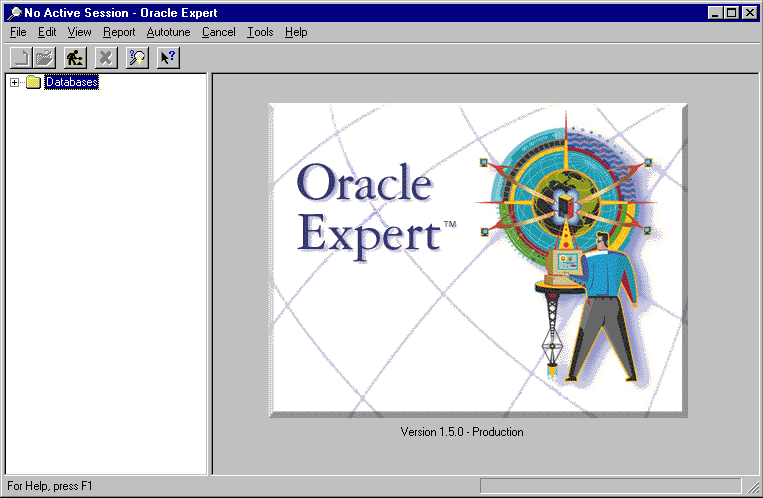Release 1.5.0
A57691-01
Library |
Product |
Contents |
Index |
| Oracle Enterprise Manager Oracle Expert User's Guide Release 1.5.0 A57691-01 |
|
This chapter describes how to start Oracle Expert and how to identify the databases to tune.
The topics in this chapter include:
Oracle Expert can be started in two ways:
Double-click on the Oracle Expert icon in the Oracle Enterprise Manager program group. The Oracle Expert Connect Repository dialog box prompts you for the information necessary to connect to the Oracle Enterprise Manager repository, including username, password, and service (sometimes referred to as a connect string).
If the database container in the tree list is empty, you may need to discover the databases that you are interested in tuning. For information on discovering databases, refer to the Oracle Enterprise Manager Installation Guide.
After starting Oracle Enterprise Manager, select a database from the Navigator in the Oracle Enterprise Manager console, then click the Oracle Expert icon in the toolbar.
Oracle Enterprise Manager maintains a repository where the information collected for your database environment and the results of the analysis are stored. This repository is a part of the Oracle Enterprise Manager repository. Use the Connect Repository dialog box to provide the login information needed to access the repository.
When you start Oracle Expert for the first time by clicking the OK button in the Connect Repository dialog box, there will be a pause. This occurs while Oracle Expert is loading its default rules into the repository. The status line informs you that Oracle Expert is loading default rules during this process.
By default, the Tuning Session wizard displays each time you start Oracle Expert. You can disable this automatic display by clicking the appropriate box on the Tuning Session wizard Welcome screen.
You can now begin using Oracle Expert.
When you launch Oracle Expert, the Oracle Expert main window displays, as shown in Figure 3-1.

The window consists of menus, panes, a toolbar, and a status bar. Use the menus and toolbar to access Oracle Expert functionality. The status bar provides information relating to the task you are performing.
The left pane of the Oracle Expert main window provides a tree structure representing the hierarchy of the Oracle Expert objects. The top object in the tree structure is the Database container. Expanding this container displays all databases that have been discovered by Oracle Enterprise Manager including Oracle Parallel Server databases, Expanding each database displays a list of tuning sessions. Each database may contain one or more tuning sessions. Click on the plus sign (+) to expand the tree and the minus sign (-) to collapse the tree.
If the Database container is empty, this means the Oracle Enterprise Manager discovery has never been performed. For more information on discovering databases and network services, see the Oracle Enterprise Manager Administrator's Guide.
When you first invoke Oracle Expert, the splash screen displays. Once a tuning session is opened, the right pane of the window displays information relevant to the tuning session highlighted in the left pane. In general, these are the pages associated with the Oracle Expert tuning session window. The information is based on data stored in Oracle Expert tables within the Oracle Enterprise Manager repository. The repository is a set of tables stored in an Oracle database. For a more detailed description of the repository, refer to the Oracle Enterprise Manager Concepts Guide.
Before you can create a tuning session, you must identify the database you want Oracle Expert to tune by clicking on the name of the database in the tree list. This database (service) name is the name Oracle Expert will use for the Database object and the Instance object on the View/Edit page of the tuning session window. Oracle Expert connects to the database by referring to the information in the Preferred Credentials defined in the Oracle Enterprise Manager console. If those credentials are not defined, Oracle Expert uses the credentials used to connect to the repository. If the repository credentials are not defined, you are prompted for the username and password.
Note that Oracle Expert requires the SELECT ANY TABLE privilege to be able to access and collect data from the database being tuned.